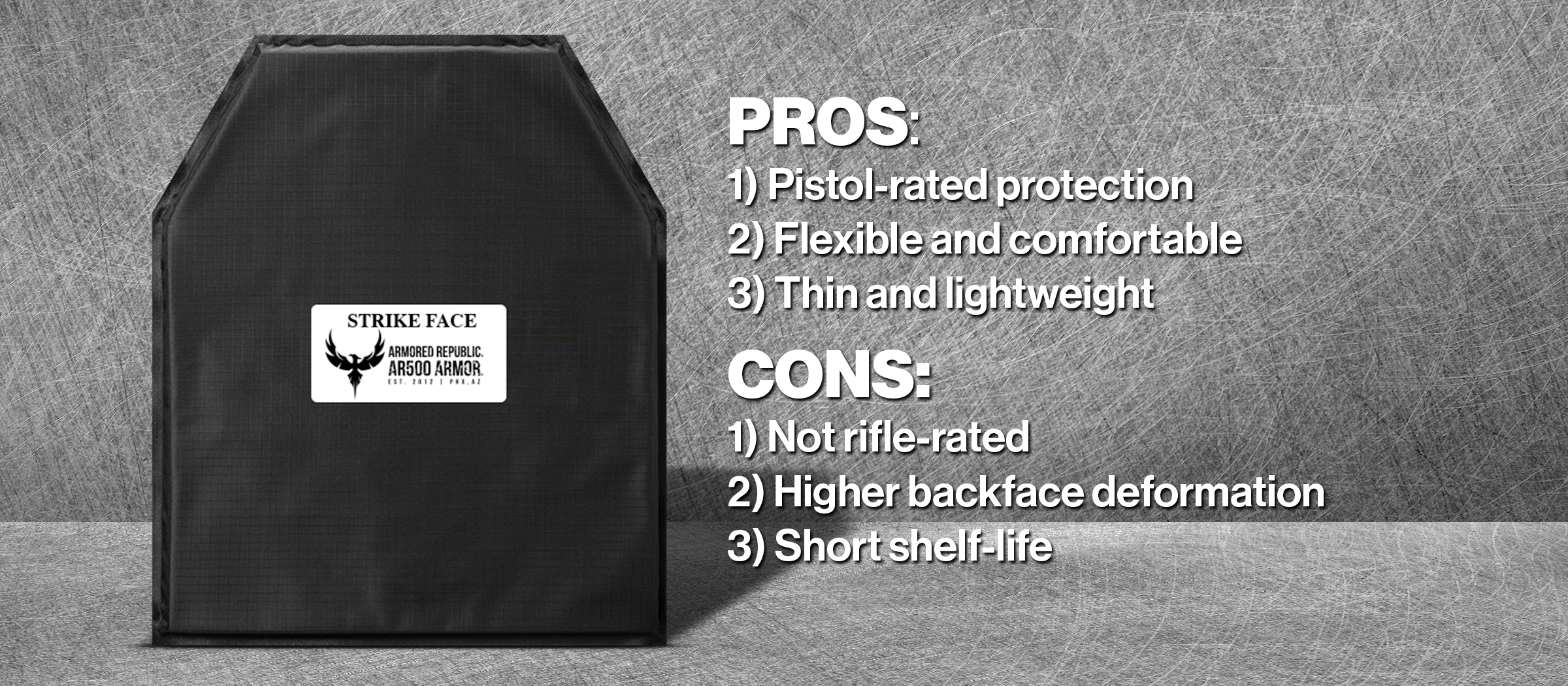Pros and Cons of Soft Armor
We can generally break the types of body armor down into two categories: hard armor and soft armor. These two groups of armor stop bullets in different ways. Soft armor "catches" the bullet, rather than disintegrating or capturing it, as with hard armor.
Soft armor spans protection levels II to IIIA. If you’re interested in rifle-rated protection, you should check out our pages on hard armor such as steel alloy or ceramic. In this section, we’ll cover the pros and cons of soft armor.
First, we’ll look at what soft body armor inserts are.
What is Soft Body Armor?
Soft body armor is a premier choice for many professionals, including law enforcement officers and first responders. Producers of soft body armor turn the raw material into a fabric that is then cut and sewn into layers. The layering effect is what creates ballistic vest panels.
This is the type of product you’ll find in our S series of body armor strike face inserts. We make every product in the S series using ballistic fabrics, such as p-aramids.
Another option besides 100% aramid is a hybrid model. Hybrids involve a blend of aramids with other well-known ballistic materials such as Spectra Shield® and Gold Shield® from Honeywell.
Why is soft body armor so popular?

What's the Difference Between Soft and Hard Body Armor Plates?
- Soft Armor is lightweight armor that provides pistol-rated protection, is highly concealable, and is flexible due to its material composition. The downsides to soft armor panels are it does not provide rifle-rated protection, have a higher backface deformation, and have a shorter shelf-life of 5 years.
- Hard Armor is often made of either steel alloy, Polymer (UHMWPE), or ceramic materials. These armor plates provide rifle-rated protection and have a lower backface deformation. The downside to steel alloy is its risk of fragmentation. The downside to Polymer will be its cost, short 5-year shelf-life, and inability to stop armor-piercing ammunition types. Ceramic's downsides are its brittle composition, shorter 5-year shelf-life, lack of consistent multihit capabilities, and cost.
Pros of Soft Body Armor
Professionals comprise a large chunk of soft armor users, but not all. Manufacturers make soft body armor for civilians, too. Some people are primarily concerned with handgun violence in their area and need something to wear under clothing for extended periods. If the following traits speak to your needs, they may be right for you as well.
- Pistol-Rated Protection: On the one hand, you could view this feature as a limitation. On the other hand, the protection you get from level II soft armor defends against 95% of ammunition used in shooting homicides. So, you won't have protection from rifle rounds, but you will have protection against the most common threats. The Armored Republic’s soft armor protects against pistol rounds like:
- 22LR
- .380
- 9mm
- .40
- .45 ACP
- .357 magnum
- 44 magnum.
- Soft armor also protects against shotgun rounds.
- Flexible and Comfortable: Soft armor can bend and flex with the movement of your body. That's a clear benefit over hard armor, which is more rigid and unyielding. Soft armor sort of “hugs” your body and is quite comfortable once you get used to having it under your clothing.
- Thin and Lightweight: You can wear it for extended periods without the bulkiness and heaviness of hard armor. Weighing a little more than a pound per insert, lightweight body armor makes fatigue much less of an issue. This can be a key factor, especially if you move around and walk a lot at your job.
- Discreet and Concealable: Soft armor is ideal if you’re not looking to advertise the fact that you’re wearing body armor. That’s ideal if you live or work in an area where you want protection from the most likely threats without drawing attention. You can wear it inconspicuously, as you would with your concealed weapon.
Cons of Soft Body Armor
Of course, soft body armor has its downsides. Otherwise, there’d be no need for hard armor. We want you to have the fullest picture possible so you can make an informed decision. So, what are some of the negatives to keep in mind if you’re considering soft armor?
- Not Rifle-Rated: The main reason people choose hard armor over soft armor is the need for rifle-rated protection. As we stated at the outset, soft armor spans levels II and IIIA. You need to at least look at level III for protection from rarer but more deadly threats. And that means looking into hard armor. But rifles aren’t the only tools that will easily penetrate soft armor.
- Not Stab or Slash-Resistant: It's a common misconception that if body armor can stop a bullet, it must be able to protect against a knife attack. That's not the case; at least not with soft armor. However, we know that many of those looking for pistol-rated protection are also concerned with defense from stabbing attacks. Stay tuned as we plan to roll out a stab and slash-resistant soft armor product in the near future.
- Higher Backface Deformation: When a projectile strikes your armor, the plate deforms to the interior (the side against your body). This is known as backface deformation (BFD). According to the National Institute of Justice (NIJ) .06 standards, BFD must be less than 44mm. While any worthwhile armor should pass those NIJ standards, soft armor tends to have the highest BFD levels. The standard of 44mm depth is about 1.73”, which can still do quite a bit of damage to your internal organs. For this reason, we always recommend wearing a trauma pad in conjunction with your armor insert.
- Short Shelf-Life: How long is soft body armor good for? Soft armor only has a shelf-life of 5 years. Professionals can rotate out and replace their soft armor at taxpayer expense whenever that time rolls around. Not so for the private citizen, and that may be an issue.
- More Expensive: This is particularly true when moving into super lightweight and exotic hybrid materials.
Conclusion
No matter what type of armor you’re interested in, you must give up some benefits to gain others. Our goal here is to make those pros and cons as plain and straightforward as possible so you can make the best decision for yourself. If you’re interested in our collection of soft armor products, head to our Body Armor page. There, you can view our body armor categories and browse our S series soft armor inserts.
